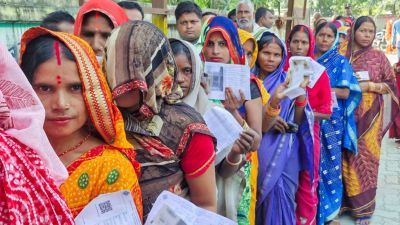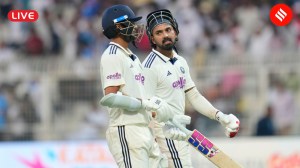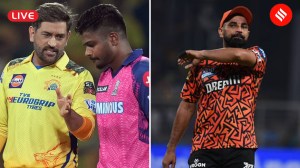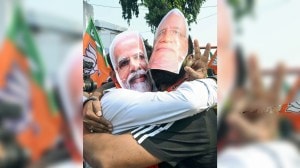The Indian National Congress (INC) was founded on December 28, 1885.
It began as a party which simply wanted to influence British policy in India, then transformed to be at the helm of India’s nationalist movement, before becoming a hegemonic force in post-Independence India, and finally seeing a decline that is still ongoing today.
On the 139th Congress Foundation Day, we take a brief look at the history of the INC, and its evolution to becoming the party it is today.
Story continues below this ad
Founded in 1885 by AO Hume
The INC was founded by English bureaucrat Allan Octavian Hume, who advocated for greater self-governance (not independence) for the people of India. On December 28, 1885, 72 social reformers, journalists and lawyers congregated for the first session of the Indian National Congress at Gokuldas Tejpal Sanskrit College, Bombay.
 Allan Octavian Hume, Father of the Indian National Congress, with his signature. (Wikimedia Commons)
Allan Octavian Hume, Father of the Indian National Congress, with his signature. (Wikimedia Commons)
At that point, the aim of the INC was not to end colonial rule, but to influence British policies in favour of Indians. Its objective is often described as providing a “safety valve”, through which Indians could air out their grievances and frustration.
“The fundamental objects of this national movement were… First, the fusion into one national whole of all the different elements that constitute the population of India; second, the gradual regeneration along all lines, spiritual, moral, social, and political, of the nation thus evolved; and third, the consolidation, oft, the union between England and India,” William Wedderburn, another founding member of the INC, wrote in his 1913 biography of Hume.
The politics of petitions
Despite enjoying some successes, the Congress was in a tough spot. While members frequently protested against the injustice meted out by the British on Indians, these protests were usually limited to prayers and petitions.
Story continues below this ad
Thus, the party was under fire from the British for upsetting the status quo, while at the same time being criticised by Indians for not doing enough. Notably, it largely consisted of educated, upper-class people, many of whom had studied abroad.
As the British rule continued, and the party further diversified into the provinces, major differences emerged regarding what its goals should be, and how the Congress should function.
These differences would eventually manifest in 1906, with a split between the moderates, led by Gopal Krishna Gokhale and Surendranath Banerjea, and the extremists, led by Bal Gangadhar Tilak. As their respective names suggests, the two groups envisioned a very different response to the Bengal Partition of 1905, with the moderates still willing to cordially engage with the British, while the extremists favouring boycotts and demonstrations.
At the helm of the National Movement
The party would re-unite in 1915, just as Mahatma Gandhi was entering the scene. Gandhi would rapidly become the most influential figure in the party, and transform its politics for good: from attending dinner parties with the British, the Congress came to be at the helm of the largest mass movement in history.
Story continues below this ad
Under Gandhi, it also became a social movement, working on eradicating caste discrimination, poverty, and ethnic differences. While it largely comprised Hindu upper caste men, it had influential members from ethnic and religious minorities, adding to its mass appeal among the people.
At the 1929 Lahore session of the Congress, under the presidency of Gandhi-protege Jawaharlal Nehru, the party declared Purna Swaraj (complete independence) as its ultimate goal.
“The British government in India has not only deprived the Indian people of their freedom but has based itself on the exploitation of the masses, and has ruined India economically, politically, culturally and spiritually…. Therefore…India must sever the British connection and attain Purna Swaraj or complete independence,” Nehru declared.
This goal would eventually be attained in 1947, albeit alongside the bitter reality of Partition.
Story continues below this ad
A hegemonic force in post-Independence India
The legacy of the national movement, combined with Congress’ organisational superior organisational strength, meant that it would enjoy a dominant position in nascent India. It would sweep the first the first six general elections.
Under the leadership of Nehru, the party embraced secularism, socialistic economic practices based on state-driven industrialisation, and a non-aligned and non-confrontational foreign policy.
However, its dominance did not preclude it from internal party politics. Nehru was succeeded by Shastri who unfortunately passed away very suddenly in 1966. This was followed by a power struggle between the Congress old guard and Indira Gandhi.
A relatively inexperienced Indira was made PM by this old guard led by the likes of Morarji Desai and K Kamaraj, with hopes of being able excercise significant control. However, Indira had a mind of her own. This would lead to another split in the party — Congress (R) led by Indira, and Congress (O) led by Desai.
Story continues below this ad
Indira’s government would survive and in 1971, come back to power with a resounding mandate.
Beginning of the decline
On the back of the Emergency (1975-77), Congress would lose in the 1977 general elections, marking its first electoral loss on the national stage. It would come to power under three years later, and stay in power till 1989 under the prime ministership of Indira (assassinated in 1984) and then her son Rajiv.
The 1989 electoral loss was a shocking setback for the party. While it remained the single largest political party in the country, it fell 68 seats short of a majority, leading to a coalition of parties to come to power instead. This coalition would last for a couple of years, followed by another 5-year Congress government under PV Narasimha Rao.
But the era of its dominance was over. In the 1990s, the Bharatiya Janata Party emerged as a national alternative to the Congress, and for the first time in India’s history, the Atal Bihari Vajpayee-led non-Congress government lasted for a full five years.
Story continues below this ad
It would again return to power from 2004-14 before being reduced to under 50 seats in the 2014 and 2016 elections.
This is an updated version of an explainer published in 2022.

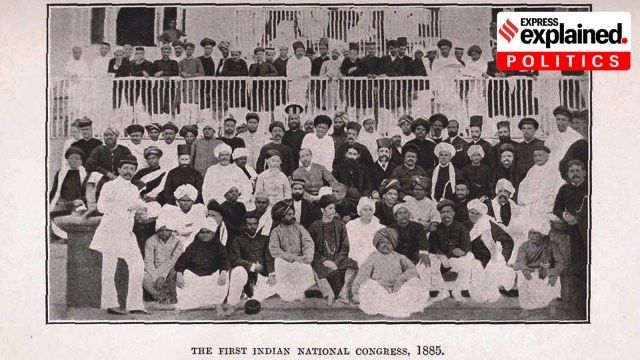

 Allan Octavian Hume, Father of the Indian National Congress, with his signature. (Wikimedia Commons)
Allan Octavian Hume, Father of the Indian National Congress, with his signature. (Wikimedia Commons)
